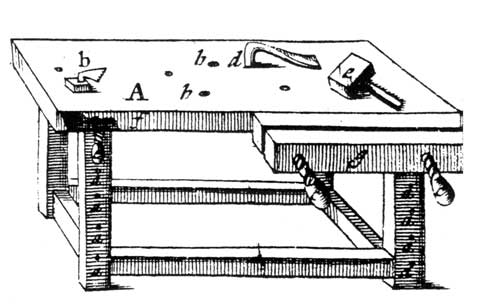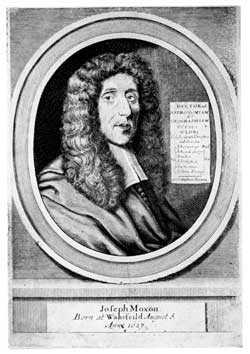
When I first became intrigued by hand-tool woodworking, I kept encountering people who said things such as: “Yes, but Moxon says jointer planes should have their cutters sharpened straight across – not curved.”
“Moxon says you should cut mortises this way.”
“Moxon says you should test a handsaw by bending it.”
As Jan Brady of “The Brady Bunch” might say: Moxon. Moxon. Moxon!
At the time, I figured I should really try to take a woodworking class with Joseph Moxon. He seemed to have the ear of the entire woodworking hand-tool community. As I soon found out, however, Moxon has been dead since 1691. Not even the long arm of Marc Adams would be able to get that guy to teach a class. Nor would Marc want to. Moxon was a printer and globe-maker by trade. Not a woodworker.
What Moxon did, however, was remarkable. He published the first ever English-language account of woodworking shop practice. He covered tools, techniques and general shop practice in a series of pamphlets titled “The Art of Joinery,” which were later combined with accounts he wrote about other trades into the seminal “Mechanick Exercises.”

So I snagged a reprinted copy of “Mechanick Exercises” and read it several times. It was slow-going. The English language of the 17th century transposed the letter “f” for the letter “s.” So the sentence “…so shall the bounds of your mortise be struck” reads as “fo fhall the bounds of your Mortefs be ftruck.” Plus the sentence structure of the time can be a maze for the modern mind.
Fourteen months ago, I began to update the text of the chapters that comprise “The Art of Joinery.” I cleaned up the transpositions, shortened the run-on sentences without changing the meanings, and I added notes in the text to help the reader. I split up Moxon’s plates so the drawing of the paring chisel is with the text about the paring chisel.
Then I added my own plain-spoken explanation of Moxon’s original text, which can be bedeviling at times. I tried to explain what was going on in each section of “The Art of Joinery,” and I illustrated Moxon’s techniques with more than 40 photos.
It’s not an academic book by any means – I’ll leave that to the people with more college degrees. The text I added is from the perspective of a modern woodworker seeking to understand historical shop practice and find techniques to make life easier. And I did indeed find some good stuff in Moxon, from using a fore plane properly to using spit to sharpen.
I’ve put it all in a 96-page book that is now at the printer in Maryland. This will be a hardbound 6” x 9” book with a linen cover and embossed letters. The interior pages will be Smythe sewn – meaning the pages will be sewn together instead of simply glued. The entire book will be in old-fashioned black and white.
The book will be $17 and will be available here at Lost Art Press and through a select few woodworking retailers. It will not be available through mass-market channels. All copies sold through the Lost Art Press web site will be signed, of course.
As soon as the book arrives in house later this fall, we’ll update the site.
— Christopher Schwarz